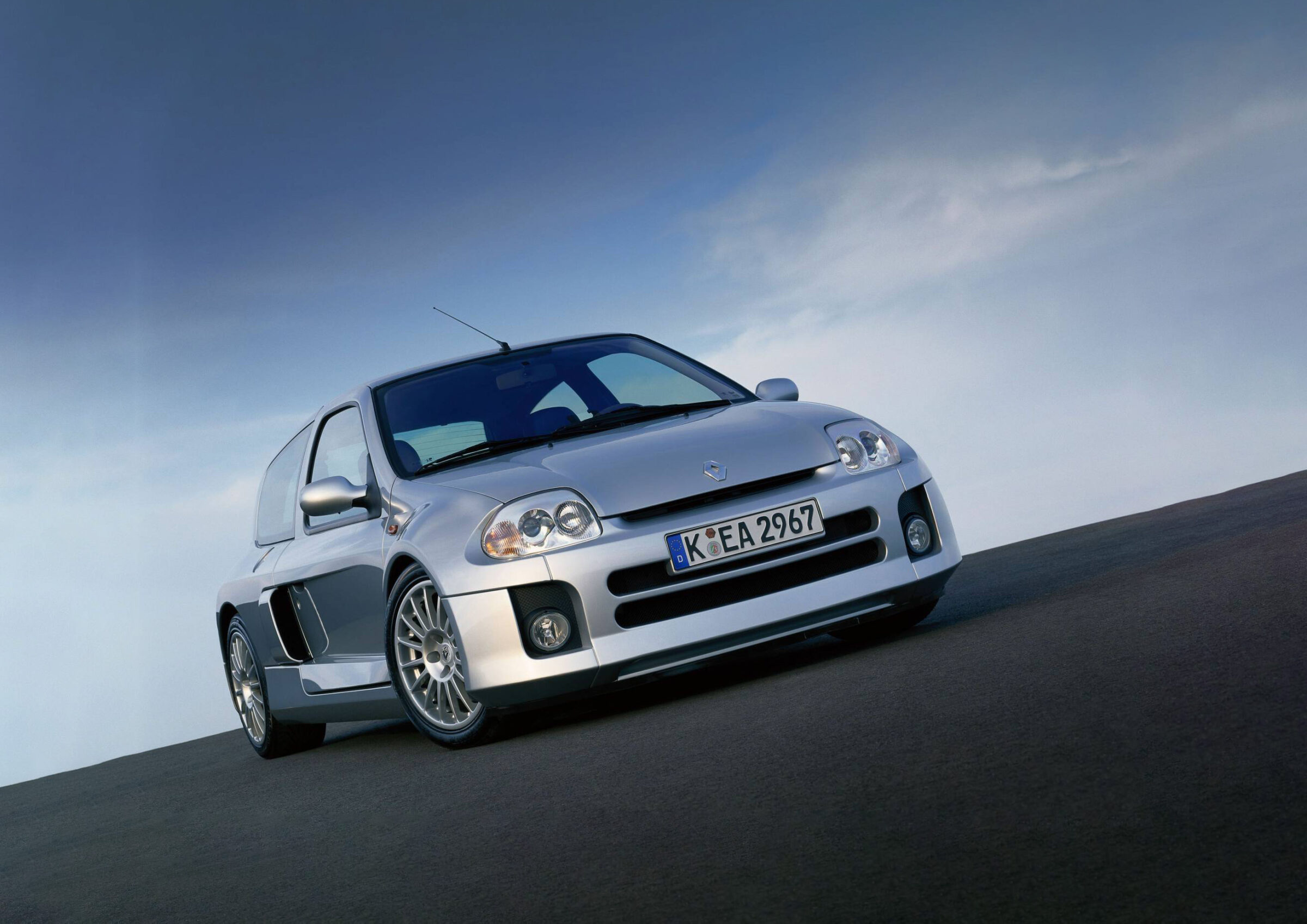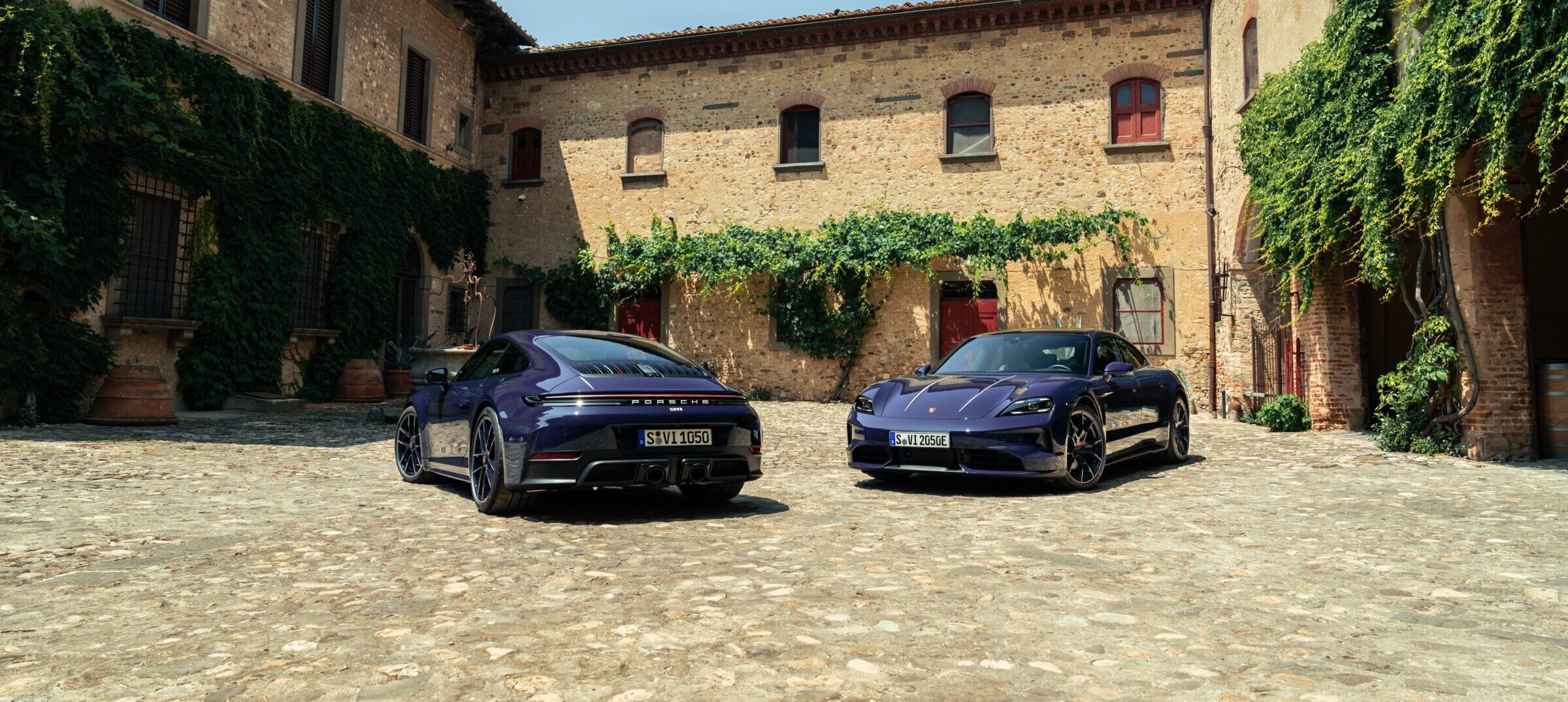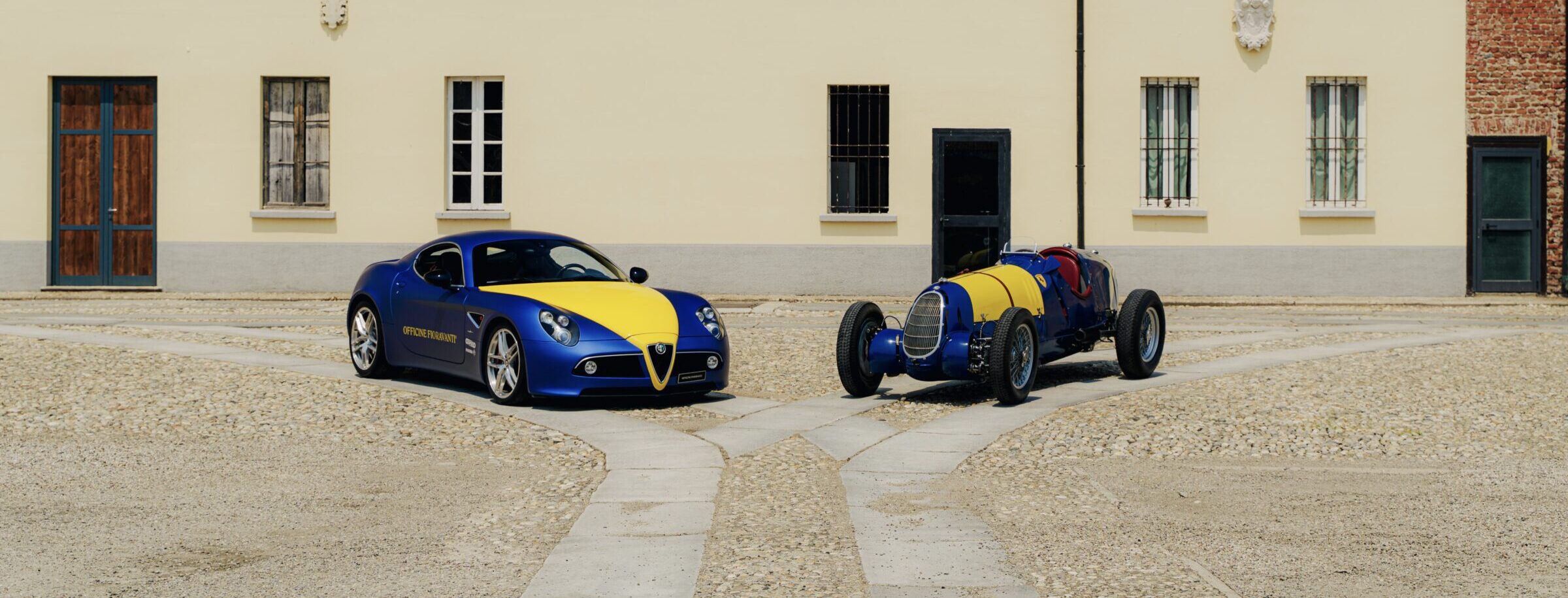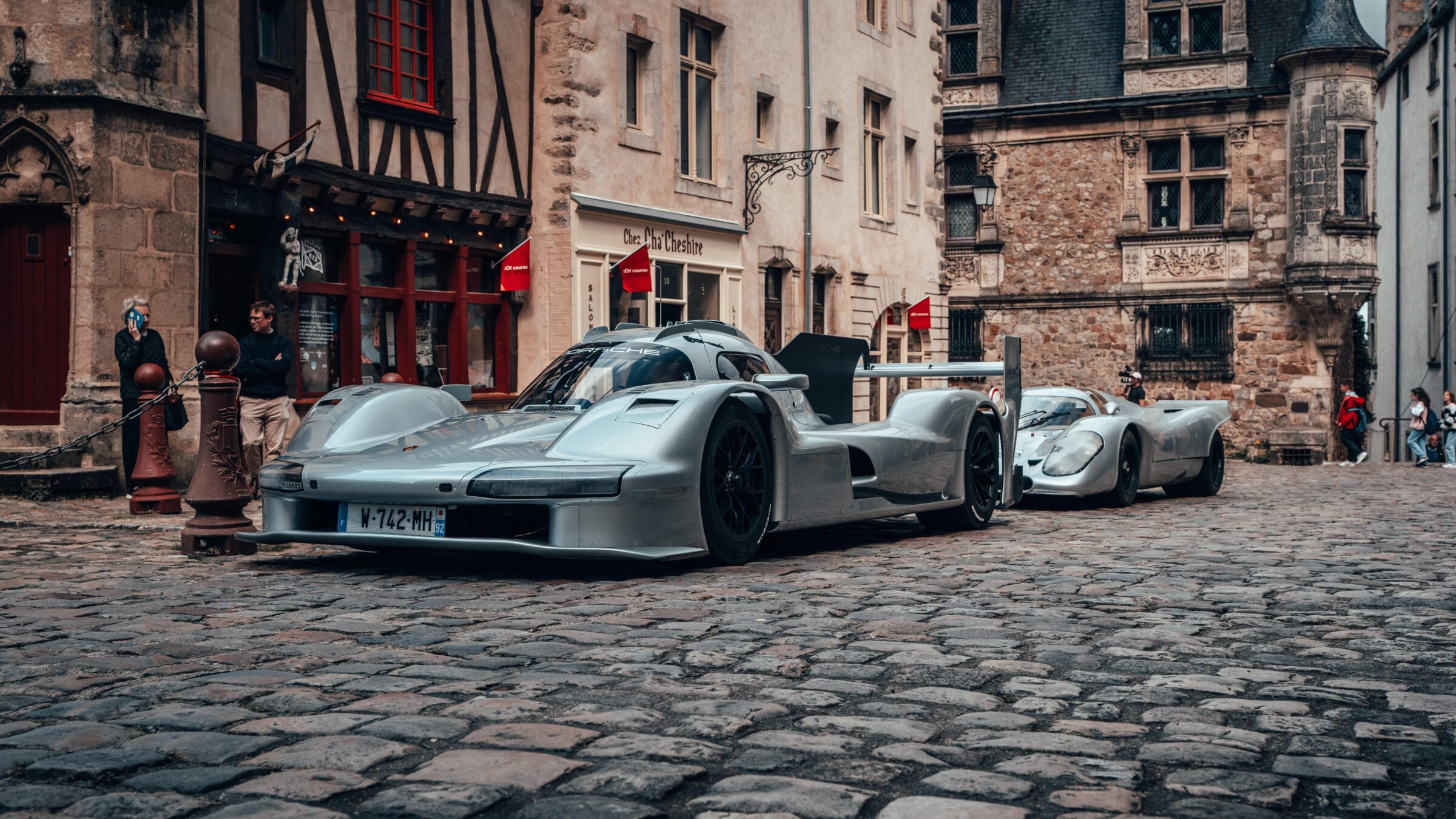Backed by the V6 – 25 years of the Renault Clio V6
The year 2000 was a strange moment in the course of time. Everything seemed new and open, at the same time chaotic and full of possibilities. The world had survived the millennium change, the Internet was spreading rapidly, globalization was running hot, and technology suddenly seemed everywhere. While many looked ahead, Renault looked back – to a radical small car from the 1980s that ignored front-wheel drive conventions and transplanted its heart behind the front seats. Exactly twenty years after the R5 Turbo, a worthy successor was launched on the market in 2000 with an equally uncompromising character: the Clio V6.
The first glimpses of this machine could already be seen at the Paris Motor Show in 1998, where the show car for Renault’s 100th anniversary stood alongside the new Twingo II and the Vel Satis study. But the center of interest was a vehicle that transformed the conventional Clio II into something completely new. The Clio V6 24V – a creation of the Renault Sport motorsport department – was not a tuning project, but a fundamentally rebuilt small car with a mid-engine and rear-wheel drive. Instead of simply sticking a large engine under the hood as usual, they dug deep into the technology box: The engine was moved to the rear, in place of the rear seat, which turned the car into a two-seater and fundamentally changed the entire driving behavior.
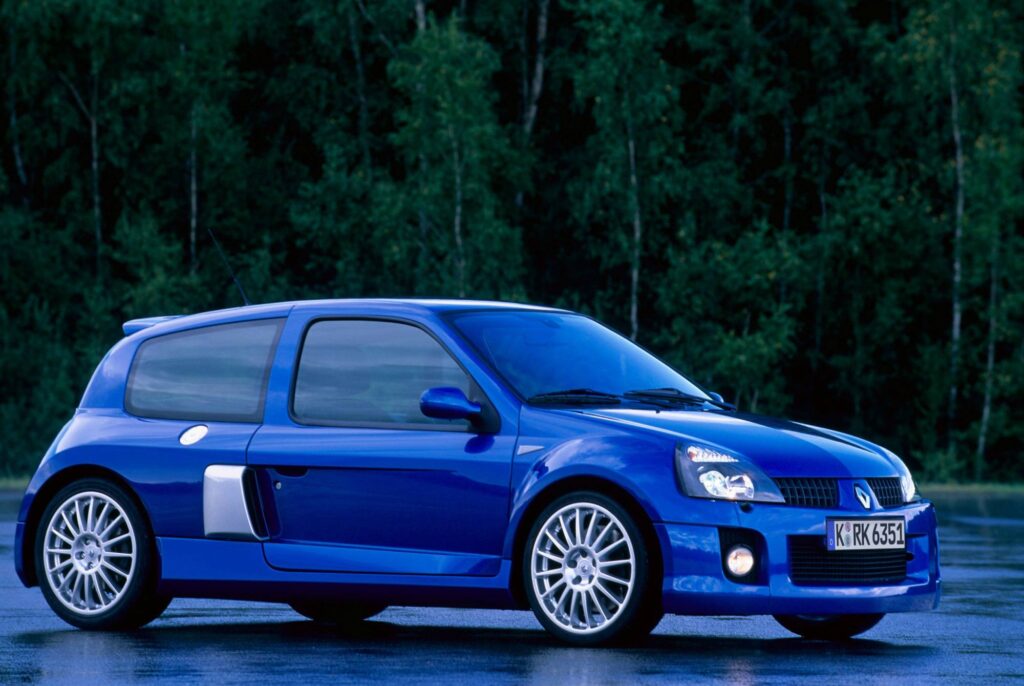
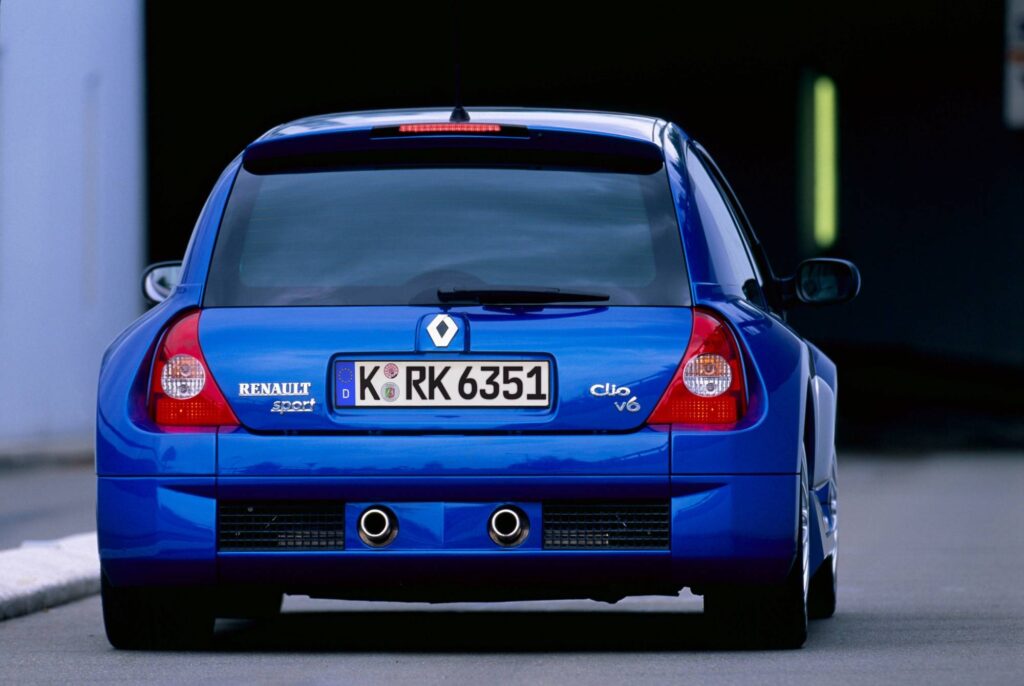
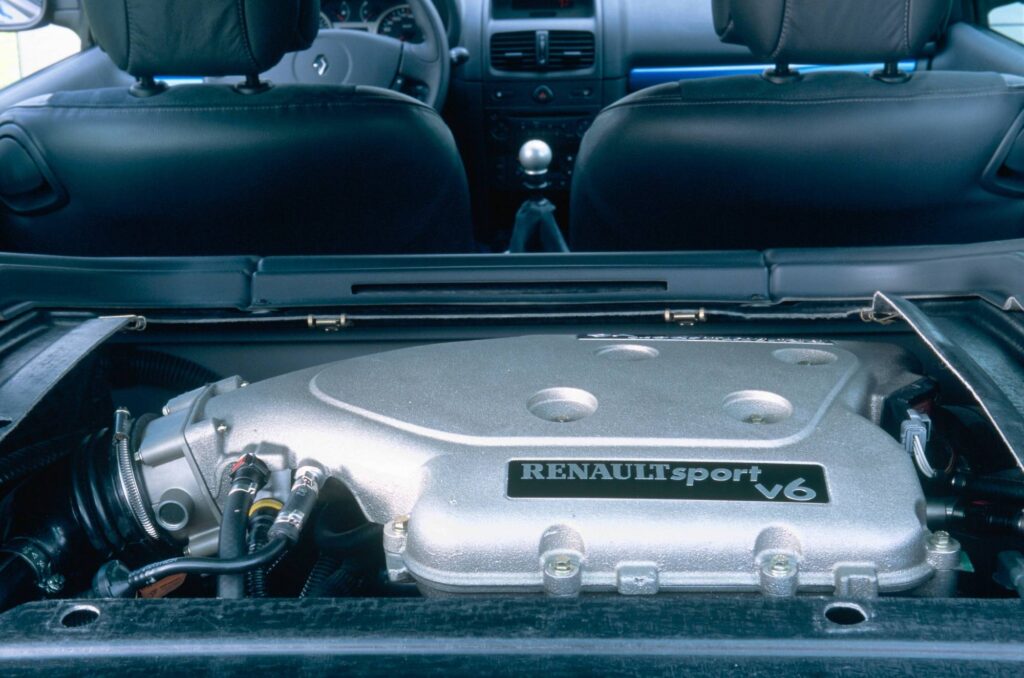
The car, which was originally intended purely as a concept, met with so much enthusiasm that Renault Sport felt compelled to consider series production. Together with the British racing team TWR, the Clio V6 was further developed into a road-going version. This first generation (“Phase 1”) was built in Sweden, with a body that was delivered from the Alpine plant in Dieppe, France, and then extensively modified. The engine was a three-liter V6 from the Laguna, Safrane and Vel Satis models of the time, with 226 hp and 300 Newton meters of torque. It drove the rear wheels via a manual six-speed gearbox, which ensured acceleration from 0 to 100 km/h in 6.4 seconds and a top speed of 235 km/h. Brake discs from AP Racing, a firm chassis and the mid-engine weight distribution made it a serious sports machine – but more for winding country roads than for relaxed highway tours.
The bodyshell, headlights and add–on parts were taken from the Clio II RS, but the rear wheel arches were cut out by hand, widened and fitted with GRP add–on parts. The conversions not only made the Clio V6 30 centimeters wider, but also longer than the standard version – space was needed for large wheels and a wider track. Inside, there were sporty leather seats, Alcantara, an adapted instrument cluster and the usual extras of the time such as a CD changer, electric windows and air conditioning.
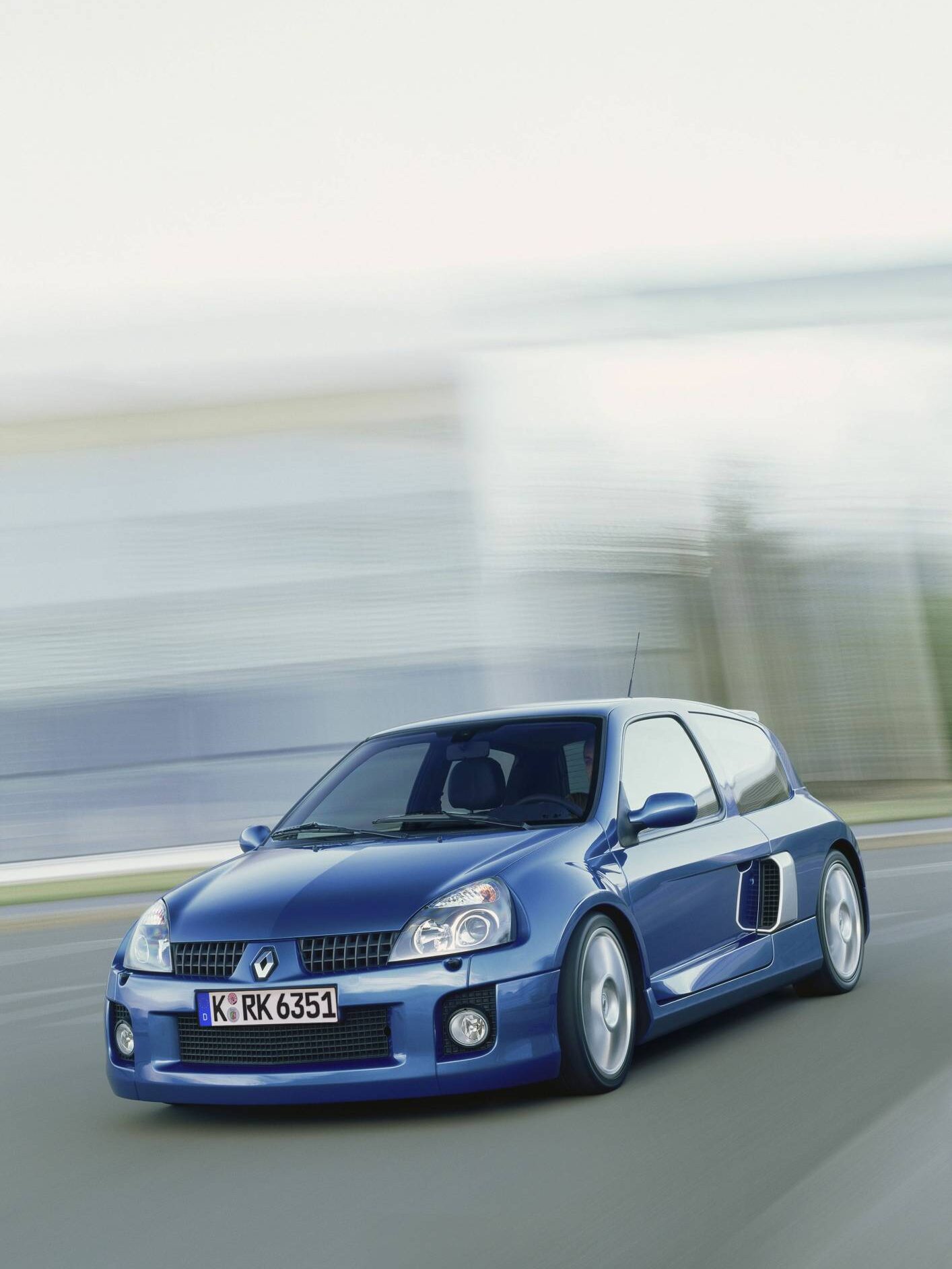
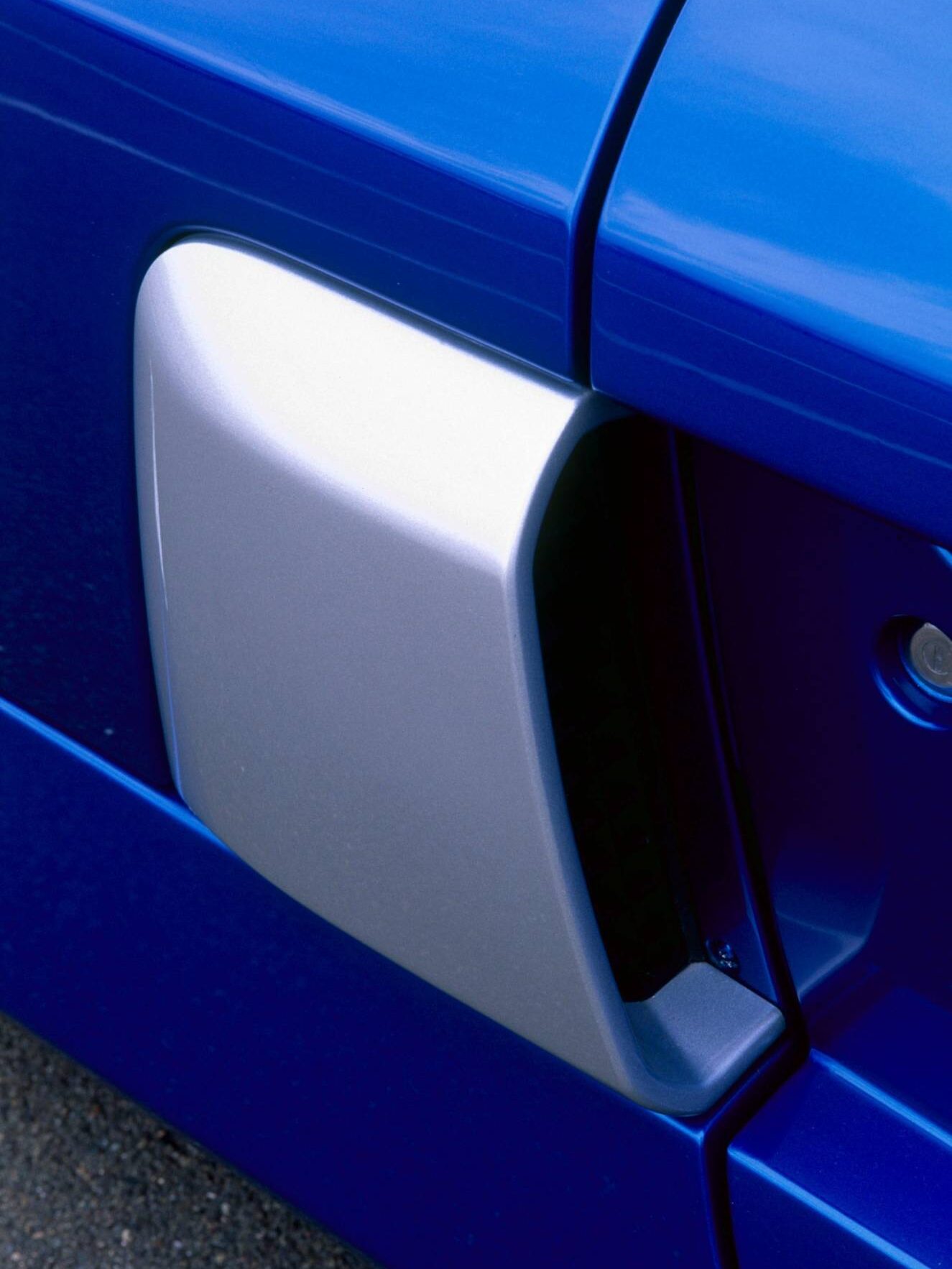
In 2003 came the revised version – Phase 2 – now built entirely at Renault Sport in Dieppe. The design was adapted to the facelift of the Clio II, with new headlights and rear lights, plus new colors such as blue metallic and yellow metallic. The major technical improvement, however, was in the engine: the unit was revised by Porsche Engineering, given a larger intake system and sharper camshafts. The power output increased to 254 hp, the top speed to 250 km/h and the standard sprint was completed in 5.8 seconds. The chassis also benefited: new stabilizers, firmer springs, more precision. But what remained was what made this Clio so special – its wildness, its recklessness, its eccentricity.
“The power unit was revised by Porsche Engineering…”
The new price in Germany was around 70,000 Deutschmarks, or later 39,900 euros. Only 185 examples of both versions were officially sold in Germany, 354 went to Great Britain and Ireland with right-hand drive. Outside of Europe, the Clio V6 was almost impossible to obtain. Anyone looking for a well–preserved example today has to budget for at least 50,000 euros – if one is offered at all.
Renault also used the Clio V6 platform for a one-make cup, which was launched in 1999. For the racing version – the Clio V6 Trophy – the power was increased to 289 hp, the chassis was optimized for the track and the car was slimmed down even further. Between 1999 and 2003, 159 of these thoroughbred racing cars were built, which filled several cup series in Europe.
Today, 25 years after its market launch, the Clio V6 is a monument to another era. It is a reminder of an era in which a manufacturer was still allowed to show the courage to build something truly unreasonable – a car that defied all platform logic. Not an everyday hero, not a miracle of efficiency, but a character piece on wheels. And that is precisely why now, a quarter of a century later, it is more fascinating than ever.
Photos: Renault Group

